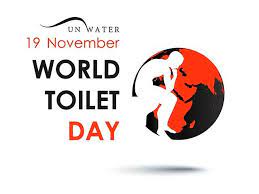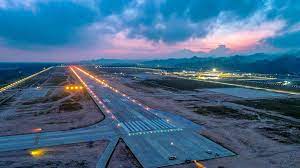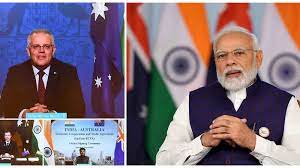Today Current Affairs: 21st November 2022 for UPSC IAS exams, State PSC exams, SSC CGL, State SSC, RRB, Railways, Banking Exam & IBPS, etc
World Toilet Day 2022:

Each year World Toilet Day is observed on the 19th November to raise awareness about the importance of sustainable sanitation to keep people healthy.
- The theme for 2022: ” Making the invisible visible “
- World toilet day is observed annually since 2013.
- Aim It is about taking action to tackle the global sanitation crisis and achieve Sustainable Development Goal (SDG) 6: sanitation and water for all by 2030.
- The theme of this year explores how inadequate sanitation systems spread human waste into rivers, lakes and soil, polluting underground water resources.
- This year, the Ministry of Jal Shakti, under the Swachh Bharat Mission Grameen (SBM-G) is organising ‘Swachhta Run’ across rural India.
- SBM-G is recognised as the world’s largest behavior change program.
- India has already achieved SDG Target 6.2 pertaining to access to safe sanitation, when the entire county achieved Open Defecation Free State (ODF) status in 2019; it is persistent in its efforts to now achieve ODF+ status.
Network Readiness Index 2022:

India climbs up six slots and now placed at 61st rank as per Network Readiness Index 2022.
- The report has been prepared by the Portulans Institute, an independent non-profit, nonpartisan research and educational institute based in Washington DC.
- In its latest version of 2022, the NRI Report maps the network-based readiness landscape of 131 economies based on their performances in four different pillars: Technology, People, Governance, and Impact covering a total of 58 variables.
- India has not only improved its ranking, but also improved its score from 49.74 in 2021 to 51.19 in 2022.
- It is noteworthy that India leads in several indicators:
- India secured 1strank in “AI talent concentration”
- 2ndrank in “Mobile broadband internet traffic within the country” and “International Internet bandwidth”
- 3rdrank in “Annual investment in telecommunication services” and “Domestic market size”
- 4thrank in “ICT Services exports”
- NRI-2022 report states that India has a greater network readiness than would be expected given its income level.
- India is ranked 3rd out of 36 in the group of lower-middle-income countries after Ukraine (50) and Indonesia (59).
- India has a score higher than the income group average in all pillars and sub-pillars.
First Greenfield Airport In Arunachal Pradesh:

Prime Minister Narendra Modi inaugurated the first Greenfield airport in Arunachal Pradesh — the Donyi Polo Airport at Itanagar.
- With Donyi Polo Airport, all eight northeastern state capitals will now have airports. This will be the third operational airport in Arunachal Pradesh.
- The name of the airport reflects the traditions and rich cultural heritage of Arunachal Pradesh and its age-old indigenous reverence to the Sun (Donyi) and Moon (Polo).
- This is the seventh airport to have been built in the Northeast in the last eight years.
- This rapid development of airports in the region is in keeping with the government’s emphasis on increasing connectivity.
- This is also the first greenfield project in northeast India.
- A Greenfield project is a project built from scratch or from ground up and it lacks constraints of prior work. In a greenfield project there are no existing buildings or infrastructure, everything is built from scratch ,and in such projects, there is no need to demolish or remodel any existing project.
Australia-India Economic Cooperation And Trade Agreement:

An Australian parliamentary committee on treaties has recommended to its government to ratify the Australia-India Economic Cooperation and Trade Agreement (AI-ECTA).
- AI-ECTA needs ratification by the Australian parliament before its implementation. In India, such pacts are approved by the Union Cabinet.
- The agreement, once implemented, will provide duty-free access to the Australian market for over 6,000 broad sectors of India, including textiles, leather, furniture, jewellery and machinery.
- Under the pact, Australia is offering zero-duty access to India for about 96.4% of exports (by value) from day one.
- This covers many products that currently attract 4-5% customs duty in Australia.
- India’s goods exports stood at USD 8.3 billion and imports aggregated to USD 16.75 billion in 2021-22.
- The agreement would help in taking bilateral trade from USD 27.5 billion at present to USD 45-50 billion in the next five years.
- The Agreement inter-alia covers areas like Trade in Goods, Rules of Origin, Trade in Services, Technical Barriers to Trade (TBT), Sanitary and Phytosanitary (SPS) measures.
- Rules of origin are the criteria needed to determine the national source of a product.
- Their importance is derived from the fact that duties and restrictions in several cases depend upon the source of imports.
- The General Agreement on Tariffs and Trade (GATT) has no specific rules governing the determination of the country of origin of goods in international commerce. Each contracting party was free to determine its own origin rules, and could even maintain several different rules of origin depending on the purpose of the particular regulation.
Rani Lakshmibai 187th Birth Anniversary:

Prime Minister, Shri Narendra Modi paid tributes to Rani Lakshmibai, the Jhansi queen known for her role in the 1857 Mutiny, on her 187th birth anniversary.
- Rani Lakshmibai, one of the warriors of India’s struggle for Independence, was born as Manikarnika Tambe in Varanasi.
- Lakshmibai got married to Gangadhar Rao Newalkar, the Maharaja of Jhansi and got the name of Rani Lakshmibai.
- Then Lakshmibai and Gangadhar Rao adopted Rao’s cousin’s son, Anand Rao, who was later renamed as Damodar. Soon after they adopted Anand, Maharaja died due to an illness.
- The East India Company took advantage of the Maharaja’s death and applied the Doctrine of Lapse.
- Doctrine of Lapse was an annexation policy followed widely by Lord Dalhousie when he was India’s Governor-General from 1848 to 1856.
- According to this, any princely state under the direct or indirect (as a vassal) control of the East India Company where the ruler did not have a legal male heir would be annexed by the company
- As per this, any adopted son of the Indian ruler could not be proclaimed as heir to the kingdom. This challenged the Indian ruler’s long-held authority to appoint an heir of their choice.
- So, due to the Doctrine of Lapse, Britishers did not accept Damodar Rao as the legal heir. The plan of the Britishers was to annex Jhansi.
- They seized the state jewels, granted her an annual pension of Rs 60,000 and asked her to leave the fort forever.




